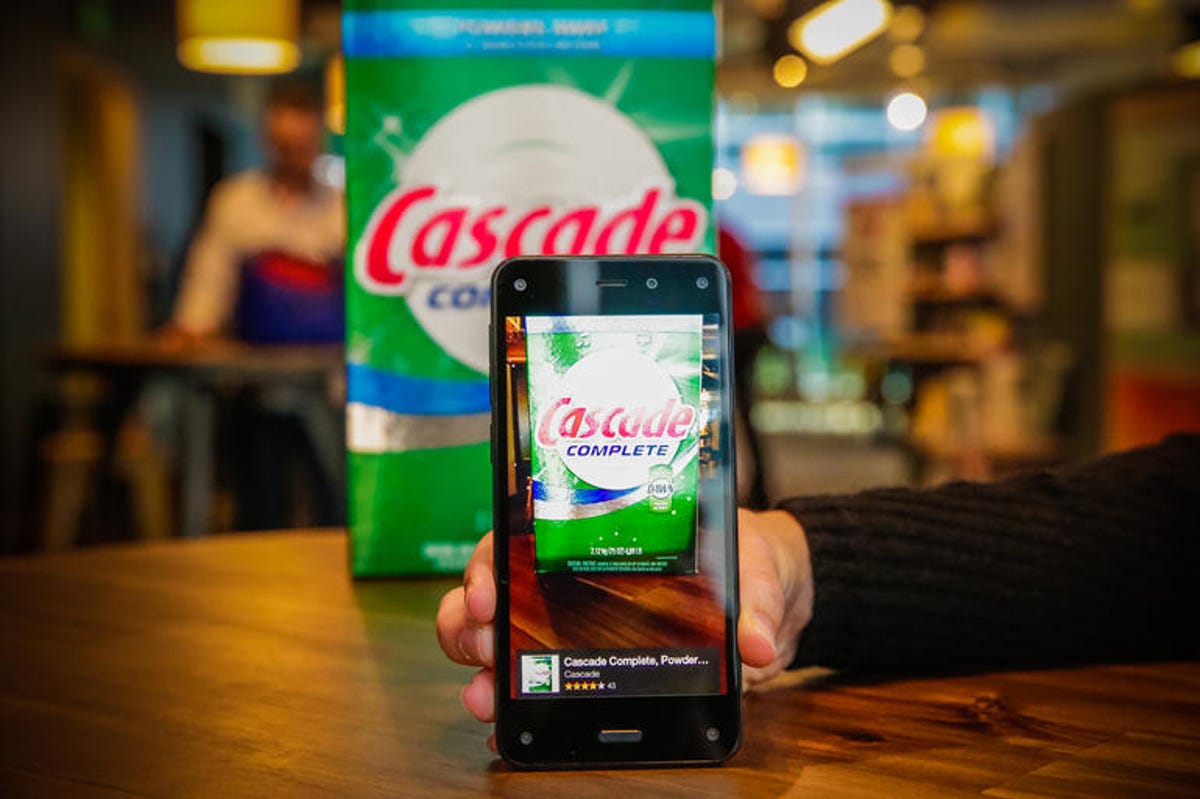
CNET
What Amazon won’t talk about during the release of its earnings Thursday is exactly what people want to know: is the Fire Phone actually selling?
The Seattle-based e-commerce giant is expected to report a loss for the second quarter of this year, in part because of its recent investment in new hardware devices, which include the smartphone and the Fire TV streaming device. While Amazon’s Fire Phone has received plenty of buzz, the company will likely stay mum on the device’s pre-order sales. But that doesn’t mean those closely watching the company’s earnings won’t ask about the phone’s performance so far.
“There will definitely be some attention on how well this phone will do,” said Aaron Peterson, a senior associate with marketing company Millward Brown Digital. “Amazon keeps branching out to all these side, niche products — they’re pushing these things out to test the waters.”
Amazon sees the Fire Phone — just the latest item on a growing list of hardware for the company — as a way to drive customers back to its Prime services and to ordering more goods online. But Wall Street is still up in the air on whether these products will ultimately benefit the company’s bottom line.
Analysts expect Amazon to report a loss of 15 cents a share, with $19.34 billion in revenue. Last quarter, the company warned investors that it expected a loss.
The phone is Amazon’s first foray into the competitive world of smartphones. The company is known for its secrecy, so it’s unlikely to share how many phones it’s sold since the Fire Phone was made available for preorder last month. It hits stores this Friday.
Related Links
- Amazon’s gutsy phone fails to ignite
- Amazon’s Fire Phone: Not quite an iPhone or Galaxy S5 killer
- Amazon’s Fire Phone could fuel $2 billion in sales
- Friday Poll: Will you buy an Amazon Fire Phone?
- Amazon Fire Phone to arrive July 25 at $199 for 32GB, $299 for 64GB on AT&T
Initial reaction to the phone, which is loaded with flashy features like 3D imaging and Firefly image- and audio-recognition capabilities, is mixed. CNET’s Jessica Dolcourt noted in her review that the 3D visuals, operating system design, and Amazon shopping integration are nice, but the phone is not a standout among other similarly priced Android phones, lacks key Google services, and offers a more limited app store.
Sales expectations for the phone are also mixed, with some questioning if Prime’s estimated 25 million customers are loyal enough to buy the device, or switch carriers. The phone is available only through AT&T, which had a 36 percent market share in the wireless industry in the first quarter of the year, according to Peterson. Wireless carrier exclusivity worked well for the iPhone in 2007, but the tactic has seen little success since. Most major smartphone launches occur across all carriers now.
“This isn’t the next iPhone,” Peterson said. “It’s not going to come in and just take over the industry. I don’t think people are going to flock to it.”
Still, Peterson and others point to Amazon’s relative success with its Kindle Fire tablets, which are designed to help Amazon drive sales within its e-commerce store, specifically with Prime customers. The Fire Phone’s Firefly feature, which automatically identifies products, makes it easy for consumers to shop for physical items and media content through the phone.
Ryan Reith, IDC’s research director for mobile devices, said the phone — which is priced at $650 off contract, or $200 with a two-year contract, the same as the iPhone 5S or Galaxy S5 — is not cheap enough to shake up the smartphone market in the same way as the Kindle Fire. What’s more, when Amazon entered the tablet market, the devices were still new to consumers, but consumers have started to realize they have other options among affordable tablets. The smartphone industry already comes with many more obstacles and options.
“I wouldn’t be surprised if, when we start to finally see some hard numbers, they’re below what Amazon expects,” Reith said, adding that initial rumors have indicated that the phone hasn’t had much traction so far, despite ranking No. 1 on Amazon’s list of best-selling on-contract phones on its website.
Of course, the phone has an advantage on Amazon’s site: the popular home page. The company has promoted the phone heavily on its website since it went on sale, no doubt attracting the attention of Amazon’s more avid Prime members. Several models of Samsung’s Galaxy line follow the Fire Phone on the best-sellers list. Amazon doesn’t sell on-contract iPhones, so it’s no surprise Apple’s phone doesn’t show up at all.
In any case, it’s really too early to tell how the Fire Phone is doing, Reith said. More reliable estimates of the phone’s sales aren’t expected for at least several weeks.
Amazon continued to promote the device this week, highlighting Fire Phone-optimized apps from companies like Fandango and eBay. The app store also announced two exclusive gaming apps this week, to drum up support for its 3D capabilities.
Last week, Amazon released a television advertisement focused on how connected the phone is to digital content and to Prime. Amazon is constantly growing its membership offerings, most recently adding Prime Music streaming. At this point, Prime, and its fiercely loyal members, may be the Fire Phone’s only saving grace.
“If you’re a Prime user, going on Amazon is just as easy as taking a breath,” Peterson said.



